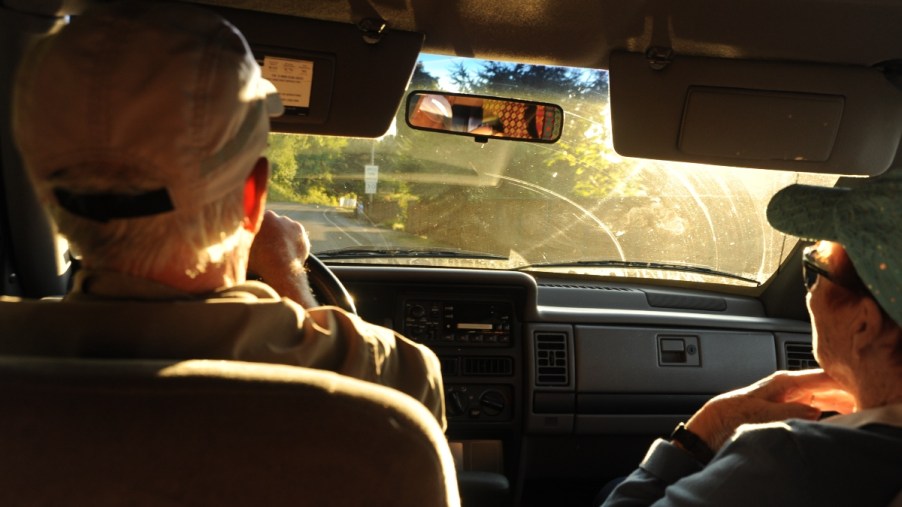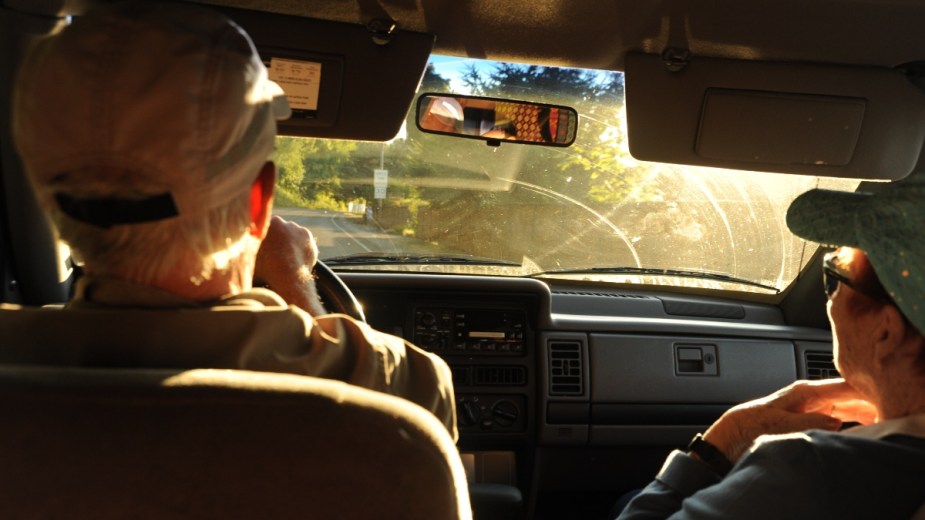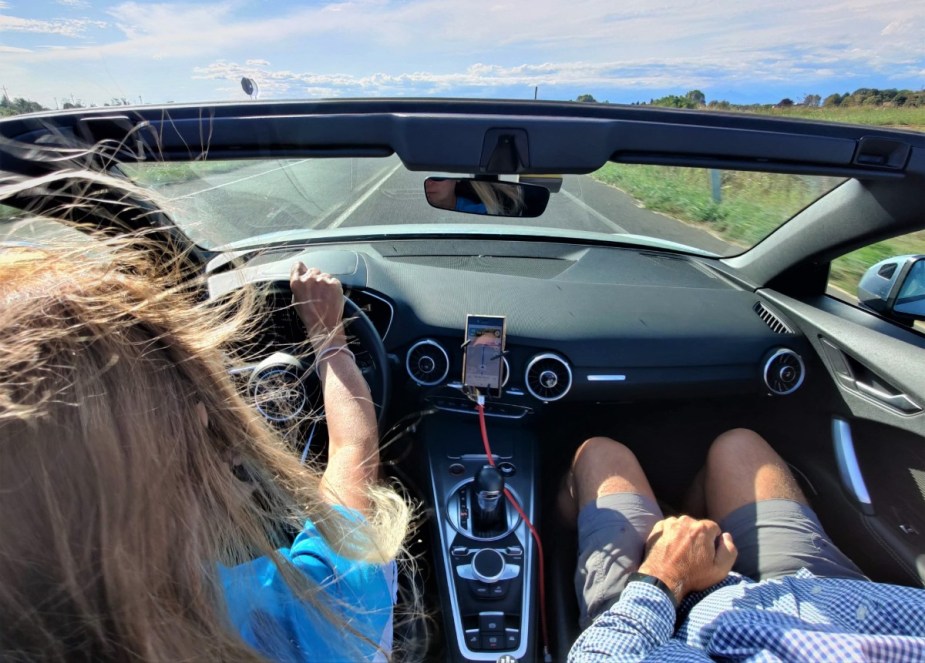
A Car Is the Best Place for Difficult Conversations — Here’s Why
Along with getting us to our destinations, cars are beneficial in surprising ways. In an earlier article, we detailed how driving a vehicle is great for creative thinking to get brilliant ideas. Now, we discuss how a car is the best place for difficult conversations.
The side-by-side factor in a car makes it easier to have difficult conversations

The next time you need to have a tricky conversation that you dread, invite the other person to go on a drive with you. One of the reasons why a car is a good atmosphere for difficult conversations is the “side-by-side” factor.
Imagine a heated argument in your mind. You probably conjure up an image of two people sitting or standing opposite of each other. They make direct eye contact with an expression of fury as they plead their case.
However, due to the natural seating layout in most cars, it’s not possible to have this direct face-to-face argument with direct eye contact. Instead, cars have the side-by-side factor, which is much less confrontational.
Our brains are triggered by animal instinct. Animals, including humans, use direct eye contact as a threat in confrontations. With this in mind, avoiding direct eye contact helps in making another person feel as though they are not under attack.
Also, without direct eye contact while sitting in a vehicle, there’s less pressure to have a continuous back-and-forth conversation. As a car drives along the road, both people can take their time and carefully think before responding.
A car ride is conducive to a less confrontational chat due to the distraction of other activities

Another reason why a car ride is the best place for difficult conversations is because of the distraction of other activities — whether it be the driving or the change in scenery. Having a chat is a secondary activity to driving, so it’s less confrontational. As a result, the parties in the conversation might not be as defensive.
In an interview with Aviva, Allegra Salvoni, a psychotherapeutic counselor therapeutic coach, explained this secondary activity technique in scientific terms.
He said, “It’s a technique hypnotherapists use a lot. They give the central executive function — the part of the brain that operates on a conscious level — an easy task because our mind needs to be busy with something. That leaves the rest of the brain free. Then we can subconsciously begin to understand our emotions and problem-solve, which is a better state to be in when you’re having a difficult conversation.”
Tips for having a productive conversation about a difficult situation while going for a car drive

To make the most of a drive to have a productive conversation about a difficult situation, then follow some guidelines. For one, you or the other person need to be a confident and experienced driver. Otherwise, driving could be too demanding to have a productive chat. If necessary, you can park the car and talk.
Additionally, the driving route itself should not be too demanding or distracting. You should avoid driving in a congested city center, areas with road construction, or anything that involves frequent stop-and-start traffic. To make a car ride feel safer, driving on a familiar route also helps.
One of the best types of drives for a good conversation is one that is long with changes of scenery. “Have you ever been in a place where you’re in one mood, and then you’re in another place, and you suddenly feel different? Or you work differently in the office than you do in your living room? That’s the principle,” said Salvoni. He continued, “When we’re in movement, it creates the sense that we’re not stuck with the problem.”
Furthermore, it’s helpful to prepare for the conversation before you go on the car drive. Carefully think about and consider the issues that you want to discuss. “The important thing to remember is that we are humans who misunderstand each other, and this dialogue is a way to bridge your two realities,” said Salvoni.
Additional suggestions for positive and constructive conversations

It’s also important to follow some guidelines that are pertinent not only for difficult conversations in a car — but also for challenging conversations in any type of environment. This includes non-violent communication, active listening, taking your time with responses, and showing compassion for the other person. Also, avoid telling the other person what they should do. Instead, it’s better to state the facts of the situation — and then follow that by describing the impact it had on your needs and feelings.
Finally, you might want to temper any expectations for having a quick resolution to the problem. Often, people need several days to think about and digest things that were discussed. Use the car drive as a starting point to discuss a challenging situation — and then pick it up another time. Maybe, that could be on your next conversational car drive.


